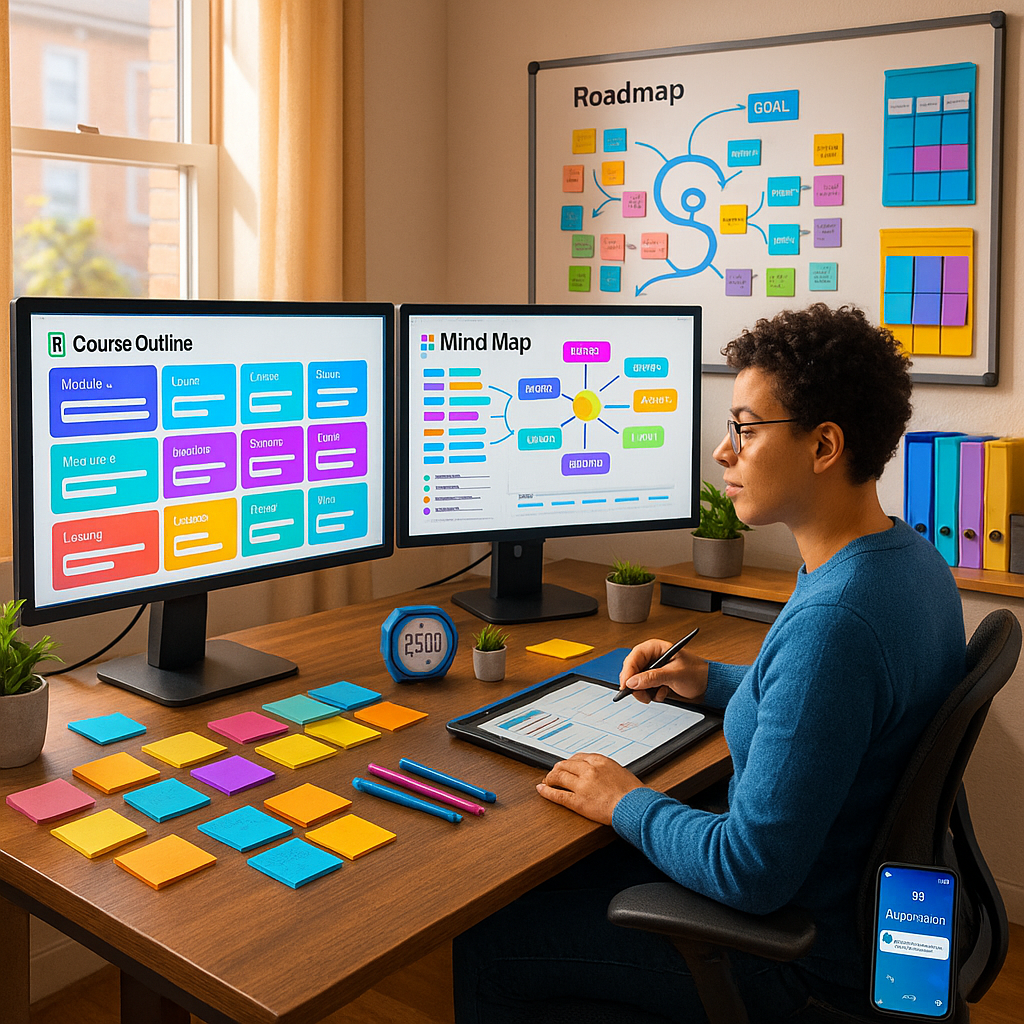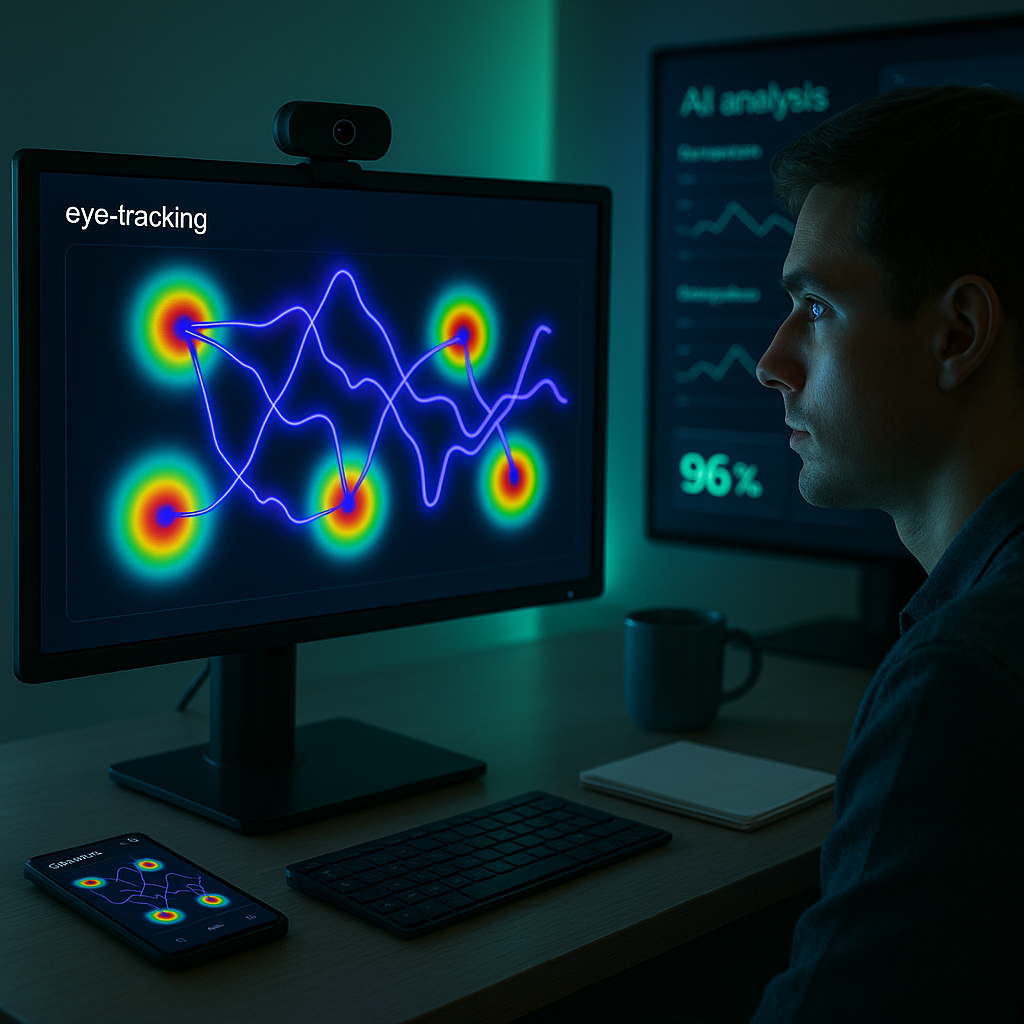Key Takeaways
- Leverage your lived ADHD experience as a unique asset: Rather than hiding or downplaying your ADHD challenges, use them as the foundation for your course. Your authentic story becomes both the framework and unique selling point, allowing students to relate and benefit from real-world insights.
- Break through analysis paralysis by designing ADHD-friendly systems: Embrace visual roadmaps, time-boxed sprints, and modular course outlines. These tools prevent you from getting bogged down in details and help maintain steady momentum throughout your project.
- Turn overwhelm into action with automation tools: Incorporate AI assistants, automated reminders, and template-based workflows. These systems streamline repetitive tasks, freeing up mental space for creative work, deep thinking, and problem-solving.
- Embrace imperfect progress and deadline flexibility: Use “soft launch” deadlines, accountability partners, and ongoing micro-adjustments. This approach creates a structure that complements your executive function, providing flexibility without sacrificing forward progress.
- Transform decision fatigue into repeatable choices: Minimize open-ended decisions by developing templates and default settings for design, content, and delivery. This shift turns exhausting choices into automatic routines that simplify your workflow.
- Scale your impact by monetizing your ADHD challenges: By sharing your systems, detours, and lessons learned as practical course content, you demonstrate to others with ADHD that their processes have value. Your experience becomes a blueprint for their growth.
- Automate for sustainability, not just speed: Choose tools and workflows that reduce long-term friction. Scheduling automations, content batching, and evergreen email sequences help ensure your business thrives even when your energy fluctuates.
Whether you’re at the very beginning or struggling to push a project across the finish line, these key takeaways reveal how ADHD doesn’t block success. It fuels it. Explore how real-world strategies, smart automation, and a fresh perspective can transform chaos into a thriving digital product business that stands out.
Introduction
Launching a digital course as a neurodivergent creator is not about taming chaos. It’s about embracing it as your creative superpower. Every so-called “failed” attempt, deep-dive rabbit hole, or impulsive detour becomes part of a tailor-made playbook for your brain. In a world flooded with generic productivity hacks and inflexible systems, this approach flips conventional wisdom. Here, your ADHD experience is not a roadblock, but the essential blueprint for building an authentic, impactful product.
If you’re familiar with feeling overwhelmed, caught in analysis paralysis, or surrounded by a graveyard of unfinished projects, you’re in good company. By incorporating ADHD-friendly systems, automation, and honest trial-and-error, course creation evolves from confusion into a sustainable, repeatable business model. Let’s uncover how tackling project overload (and integrating smart automation) equips you to turn ADHD-fueled chaos into a compelling digital product unlike any other.
The Breaking Point: When Traditional Course Creation Failed
My initial foray into digital course development mirrored the classic ADHD experience: 47 open tabs, a labyrinth of Notion pages, and more half-written outlines than I could organize. The cycle was familiar. I’d blast through an initial burst of hyperfocus, then grind to a halt when met with endless decisions. Was Kajabi or Teachable better? Record video or draft the workbook first? What if the lighting wasn’t perfect?
Three months later, not a single module was finished. The accompanying shame only grew. The critical turning point came at 3 AM while doom-scrolling through glossier, completed courses online. In that moment, I realized my struggle wasn’t a failure of effort; I was trying to bend my neurodivergent patterns into a rigid, neurotypical process. A process fundamentally mismatched for how my mind works.
Reframing ADHD as a Product Feature
Rather than battling against my natural rhythm, I chose to harness it. Hyperfocus morphed into planned “creation sprints”, bursts of idea-generation became versatile bonus content, and my difficulty with linear learning shaped a more inclusive, flexible course design. In essence, I set out to build the kind of course I once desperately searched for: one that genuinely spoke to neurodivergent learners.
Specific ADHD traits provided unexpected advantages:
- Divergent thinking: Sparked unique, cross-disciplinary module connections.
- Hyperfocus abilities: Enabled immersive deep-dive sessions beyond standard lessons.
- Context switching: Informed non-linear learning pathways for flexible progress.
- Pattern recognition: Allowed new frameworks to simplify complex topics.
This authentic repositioning didn’t just salvage my project. It became my greatest asset. Students engaged not despite my neurodivergence, but because it created solutions tailored to their real learning needs.
Building the Systems: My ADHD-Friendly Production Pipeline
After adopting a new mindset, I set out to craft systems that would transform scattered energy into structured progress. This led to an ADHD-adapted production pipeline built for creative strength and sustainability.
The Content Creation Framework
- Brain Dump Phase (over two to three focused sessions):
- Dictate all initial ideas into Otter.ai voice memos.
- Build non-linear mind maps in Miro without self-censoring.
- List every relevant and tangential topic that comes to mind.
- Organization Phase (Within Notion):
- Use content sorting templates for painless categorization.
- Arrange modules visually with drag-and-drop clarity.
- Employ color-coding to separate content types and difficulty levels.
- Production Sprints (Structured, two-hour work blocks):
- Tackle one manageable module piece per sprint.
- Leverage timers for focused recording sessions.
- Edit content immediately while momentum is strong.
Automation: The Game Changer
The true transformation occurred when I integrated automation to compensate for executive function gaps:
-
Content Management:
-
Route Otter voice notes to automatic transcription and into Notion for easy editing.
-
Automate file storage and classification in Google Drive.
-
Use Canva templates for streamlined, consistent slide creation.
-
Project Tracking:
-
Employ ClickUp automations for visualizing task completion.
-
Sync time-blocked calendars with reminders to stay on track.
-
Set up automated updates for accountability partners to sustain motivation.
By letting these automations handle the logistical load, I was free to devote more bandwidth to creative breakthroughs and problem-solving.
Managing Overwhelm Through Micro-Commitments
I discovered that breaking down every goal into the smallest possible pieces was essential for staying unstuck. Instead of the daunting task “create module one,” my daily list looked like:
- Record a 5-minute concept introduction
- Design a single worksheet template
- Jot down three bullet points for the upcoming section
Implementing the “15-Minute Rule” made a huge impact: giving myself permission to stop after just 15 minutes reduced the intimidation factor. Most of the time, once started, I found my momentum carried me well beyond. As a direct result, I completed the entire course within six weeks—a fraction of the time previous scattered attempts required.
Daily Rhythm Design
- Morning: Focused on highly creative tasks (recording, outlining)
- Afternoon: Dedicated to technical or admin work (editing, uploading)
- Evening: Planning and prepping for the next day’s work
- Built-in buffer days: Allowed flexibility for time blindness and unexpected detours
This routine protected progress from impulsivity and minimized risk of burnout.
Tech Stack and Tools That Actually Worked
After cycling through dozens of tools, I streamlined my workflow to a simple, ADHD-compatible set:
Core Production Tools
- Notion: For organizing curriculum, mapping content, and tracking progress.
- Loom: Quick, low-friction video recording.
- Canva: For rapidly building consistent, template-based workbooks and slides.
- Teachable: Easy-to-use platform for publishing and delivering finished courses.
Automation Allies
- Make (formerly Integromat): Powers sophisticated, multi-step workflows across platforms.
- TextExpander: Automates repetitive writing, from email responses to course handouts.
- Grammarly: Offers instant editing help, reducing friction for neurodivergent writers.
- Focus@Will: Provides scientifically designed focus music, tailored for ADHD brains.
The essential lesson: Every tool had to make things simpler, not more complicated.
From Systems to Success: The Results
The shift to ADHD-centered design resulted in exceptional outcomes, especially for neurodivergent learners. Key metrics and feedback highlighted the impact:
- 92% course completion rate, compared to an industry standard of 15%
- Average session viewed for 27 minutes, an ideal window for ADHD attention spans
- Resoundingly positive feedback on the freedom to learn non-linearly
- Students reported feeling genuinely seen and supported throughout the course
The structures and templates developed here now form the backbone of new projects. What was formerly a chaotic struggle has become a reliable, repeatable creation engine.
Conclusion
Transforming the traditional course-building model into an ADHD-powered strength has reframed every presumed weakness into a powerful differentiator. By embracing hyperfocus, celebrating divergent ideas, and developing automation-enhanced workflows, the process shifted from disarray to streamlined creativity. Micro-commitments and an adaptive, minimalist tech stack counteracted overwhelm, creating tangible progress and sustainable momentum.
Above all, designing for neurodivergent needs led to remarkable outcomes: Higher engagement, flexible pathways, and authentic student connection. This journey demonstrates that neurodivergence, when coupled with the right systems and mindset, is not merely manageable; it’s a catalyst for innovation and impact. As the marketplace for online education becomes more crowded, those who build with their unique wiring at the core (instead of around it) will stand out as leaders and originators.
Looking to the future, digital creators who honor neurodiversity, leverage automation, and continuously adapt their systems will not just keep up. They’ll set the pace for what’s possible. The real competitive edge isn’t hiding neurodivergence but embracing it as the wellspring of both creativity and resilience. For ADHD minds, the path to success is not conformity but innovation. The boldest outcomes come when you allow your brain to spark and design tools that scale.





Leave a Reply